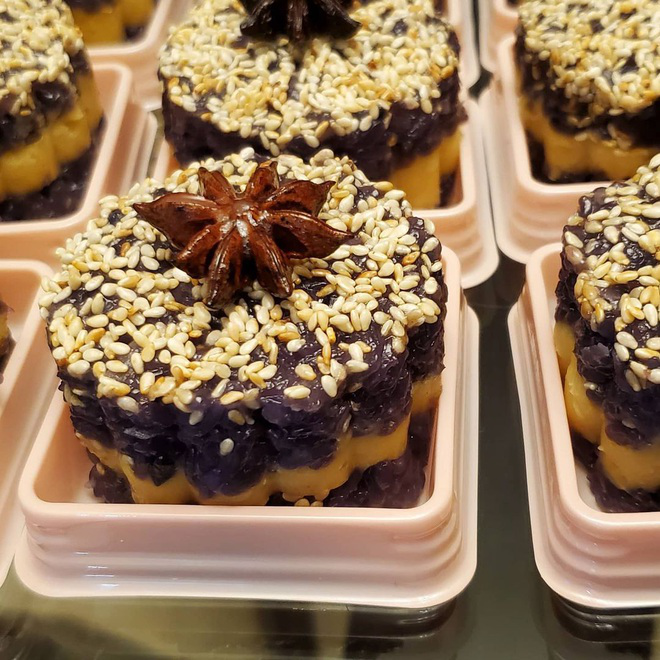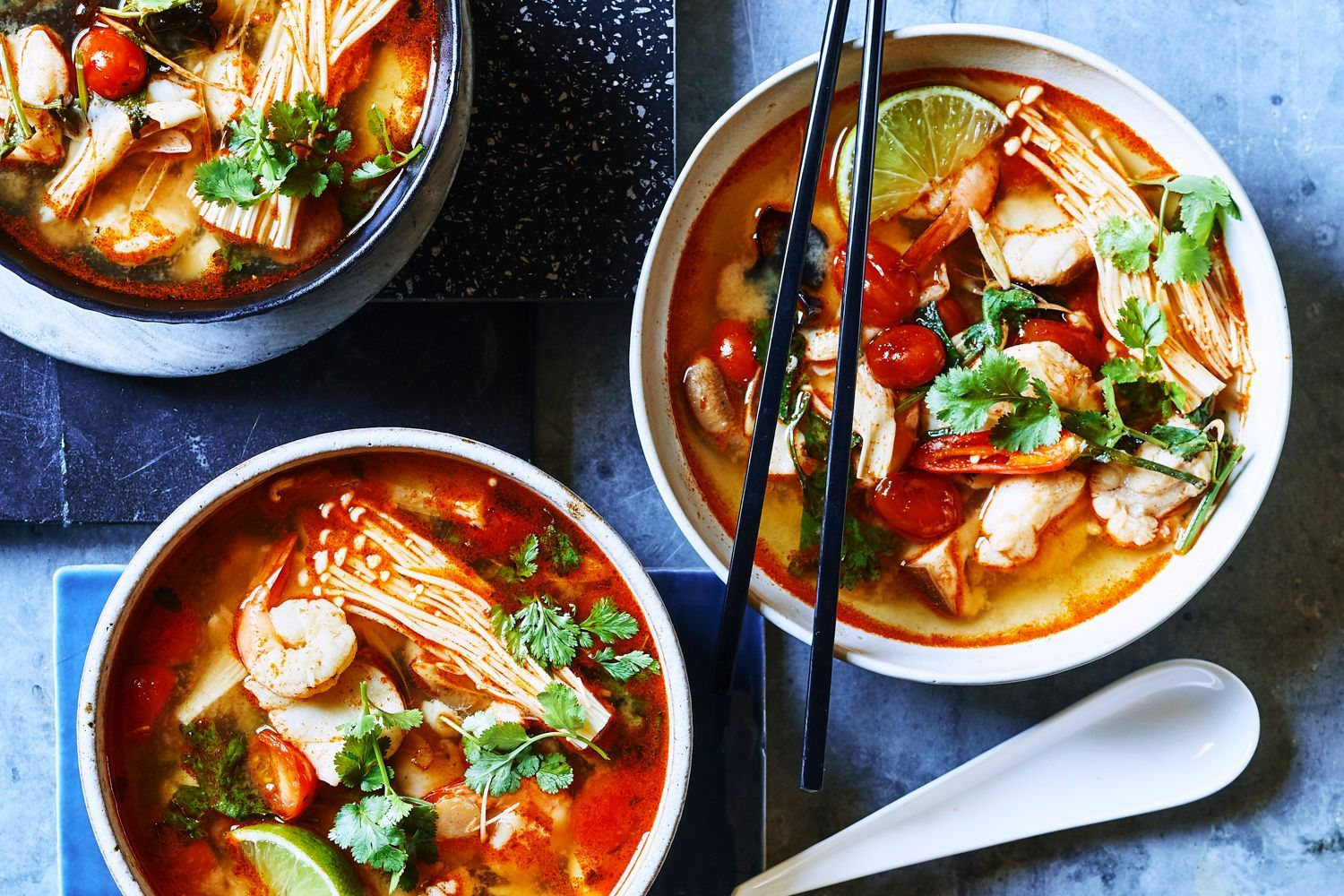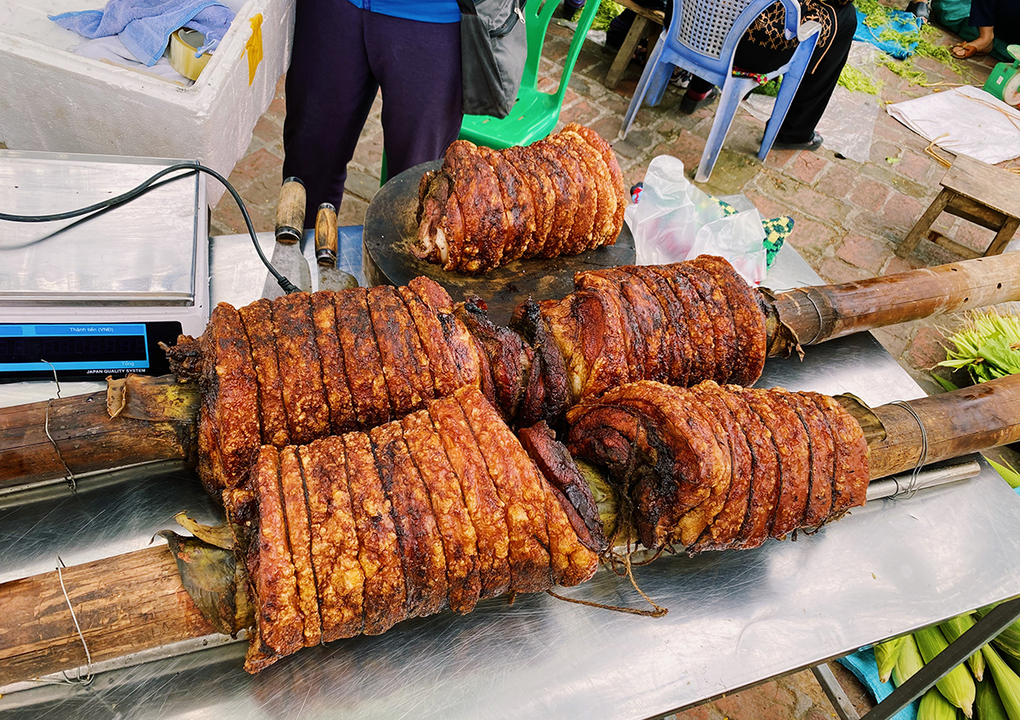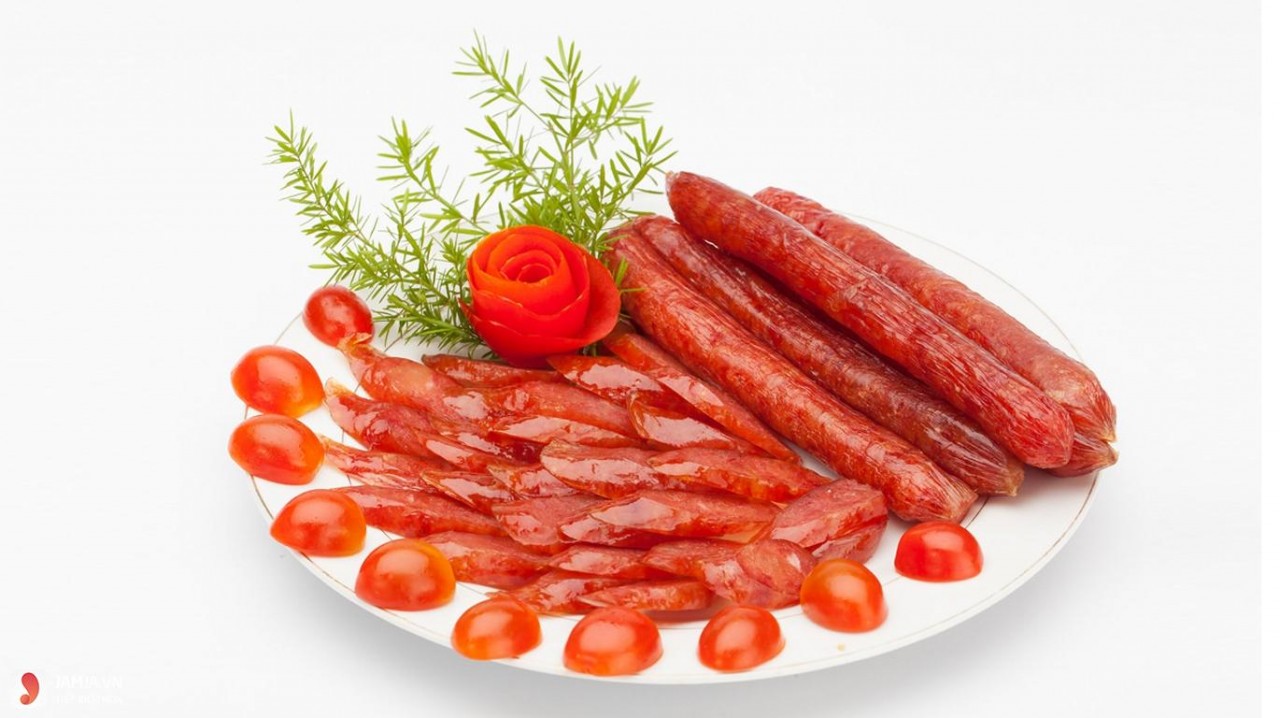Foie Gras: Why Is This Delicate French Dish Considered "Cruelty"?
| Tastes of the Mekong: The Best Dishes of An Giang | |
| Most Popular Thai Dish: Tom Yum Goong with An Untold Story | |
| Famous Crispy Pork Roasted on Carrying Poles in Duong Lam Ancient Village |
Foie gras (pronounced "fwah-grah") is considered a delicacy around the world. French for "fat liver," foie gras is the liver of a duck or goose that has been enlarged through a special feeding technique. Although popularized in France, foie gras actually has been around since the Ancient Egyptians learned that birds could be fattened by force-feeding. The technique is controversial, but foie gras remains one of the world's great luxury foods.
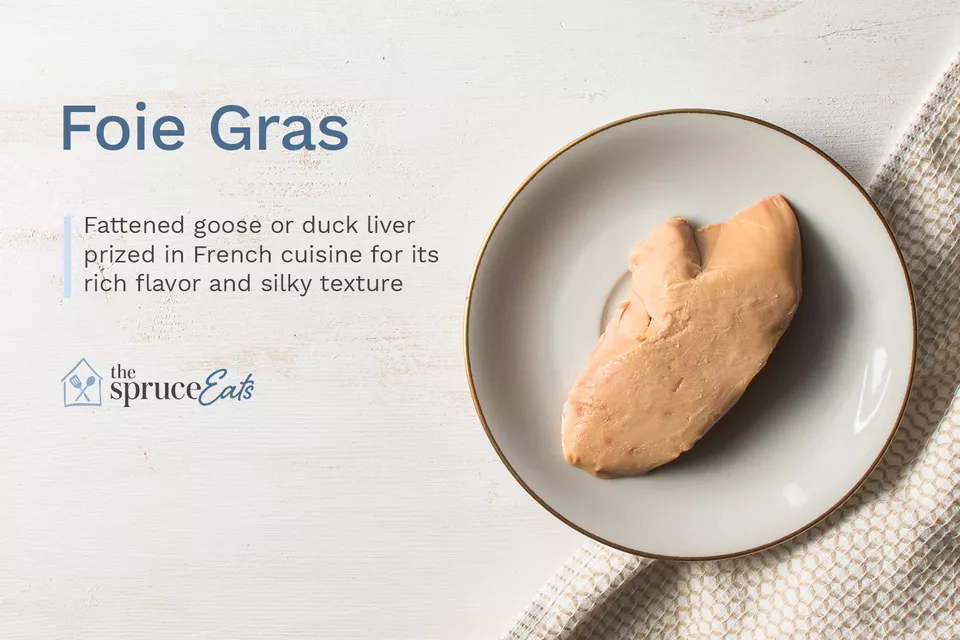 |
| The Spruce Eats / Lindsay Kreighbaum |
Foie gras production requires force-feeding birds to enlarge their livers — up to 10 times the normal size. Many animal rights activists describe the process as cruel and torturous; government decision makers have been listening.
New York City is currently home to about 1,000 restaurants that serve foie gras, but on Oct. 30, 2019, the City Council voted to ban the dish beginning in 2022. New York will join California, Australia, India and numerous other places that prohibit foie gras for animal rights reasons. Whole Foods took foie gras off its shelves in 1997.
What Makes Foie Gras a Delicacy?
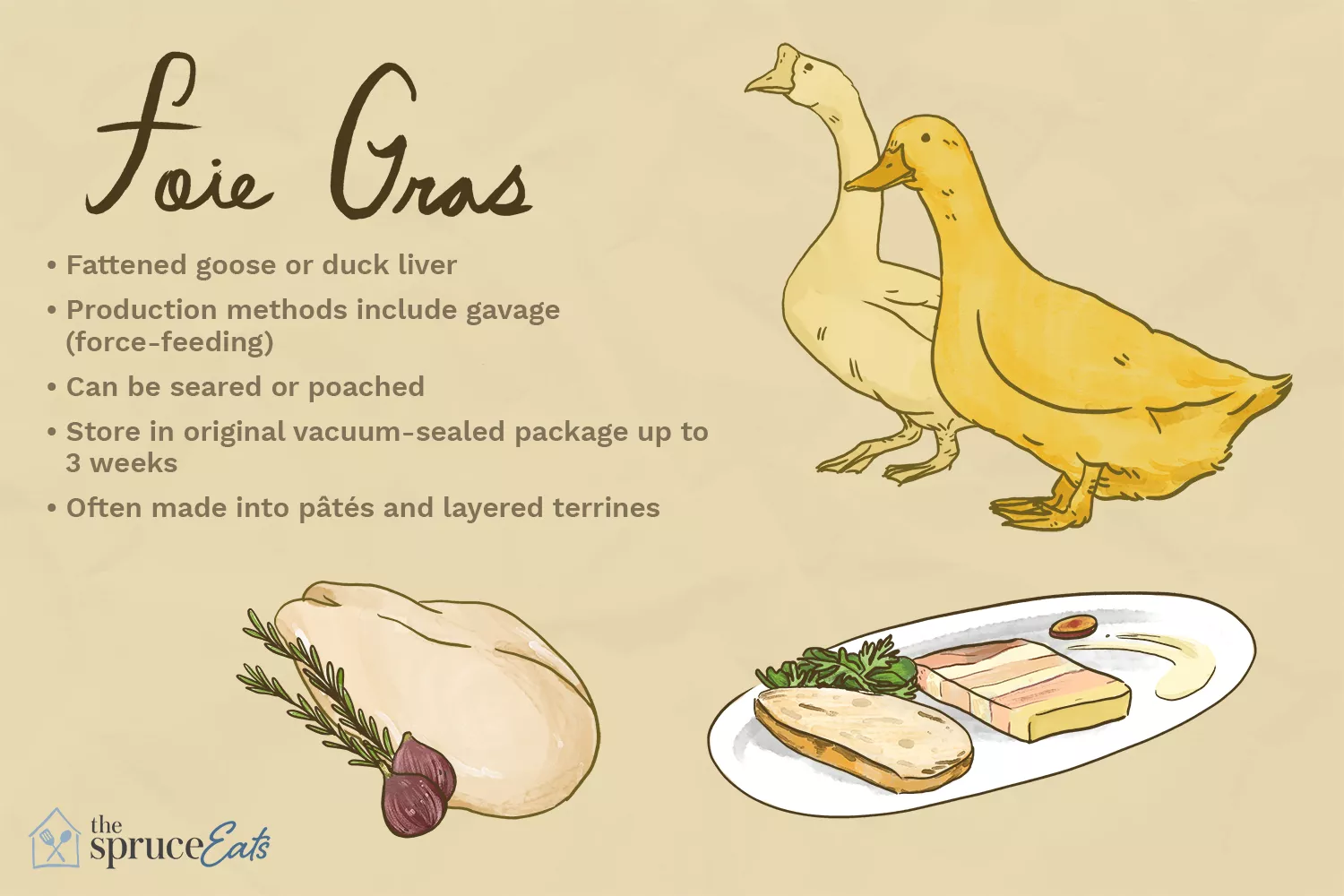 |
| The Spruce Eats / Joshua Seong |
Foie gras is a duck or goose liver fattened through a labor-intensive force-feeding process known as gavage. The process dates back to ancient times when Egyptians force-fed domesticated geese upon discovering that "waterfowl developed large, fatty livers after eating large amounts in preparation for migration," according to the Artisan Farmers Alliance, a group representing foie gras farmers.
The gavage practice spread across the Mediterranean then into France in the late 16th century. French chef Jean-Joseph Clause is credited with creating the first pâté de foie gras in 1779. He patented the dish in 1784. He received 20 pistols from the food-loving King Louis XVI as a "thank you" for his culinary genius, according to The Spruce.
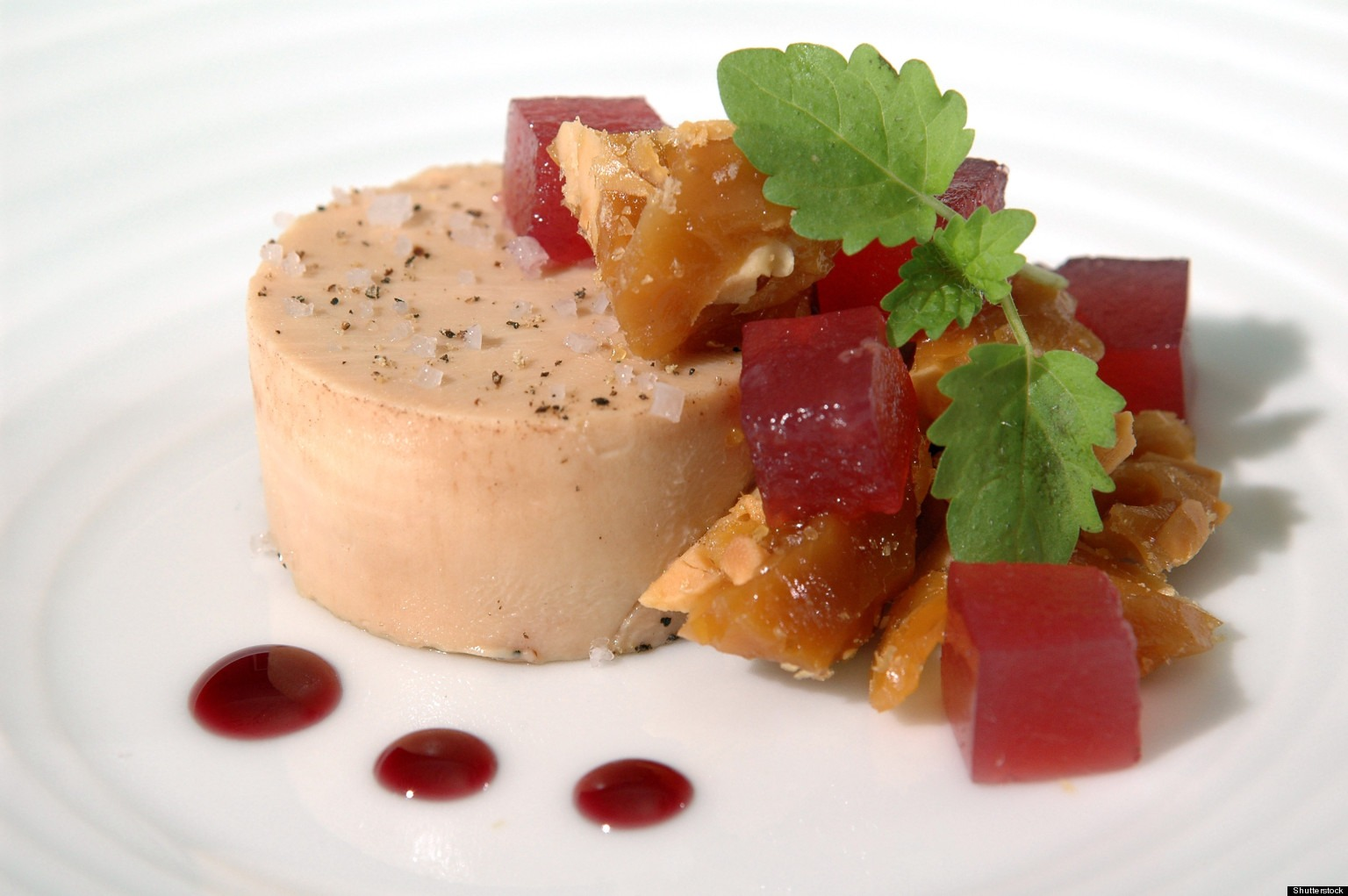 |
| Photo: Facebook |
Foie gras — now a staple in France's gastronomical heritage — has a smooth texture and rich taste. It's most commonly served as a pâté with brandy, seasonings and truffles; pureed and spread atop toast; cooked in a terrine; or seared whole. It's mega-pricy due to the force-feeding labor and massive amount of feed needed to create the end product. In some cases, ducks and geese eat 4 pounds (1.8 kilograms) of corn feed per day.
How to Cook Foie Gras
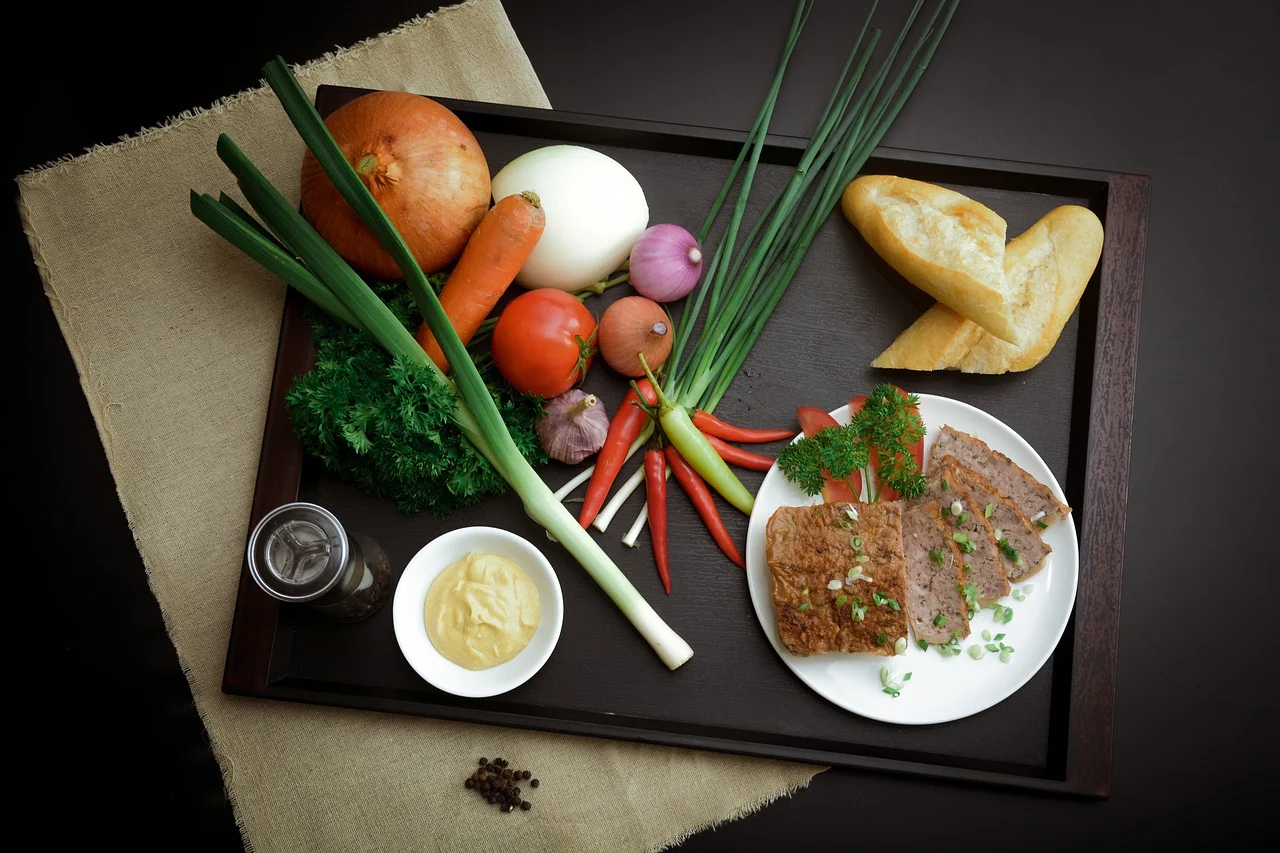 |
| Photo: Pixabay |
There are a few traditional methods for cooking foie gras, from simply searing whole in a hot pan to pureeing and making it into a mousse. It melts easily, so while it is often prepared with high heat—such as pan-searing—cooking it this way can be tricky.
A terrine of foie gras is actually one of the purest forms of preparations: The pieces of liver are layered in a loaf pan along with a bit of Sauternes or Armagnac and then the mold is weighted down, baked, chilled, and then sliced.
Foie gras is also often made into a mousse, where cooked foie gras is pureed in a food processor along with brandy and butter to make a smooth, silky paste to spread on fresh bread. You will also find goose or duck liver pate, which is made by blending the foie gras with cream and other ingredients into a spread for crackers.
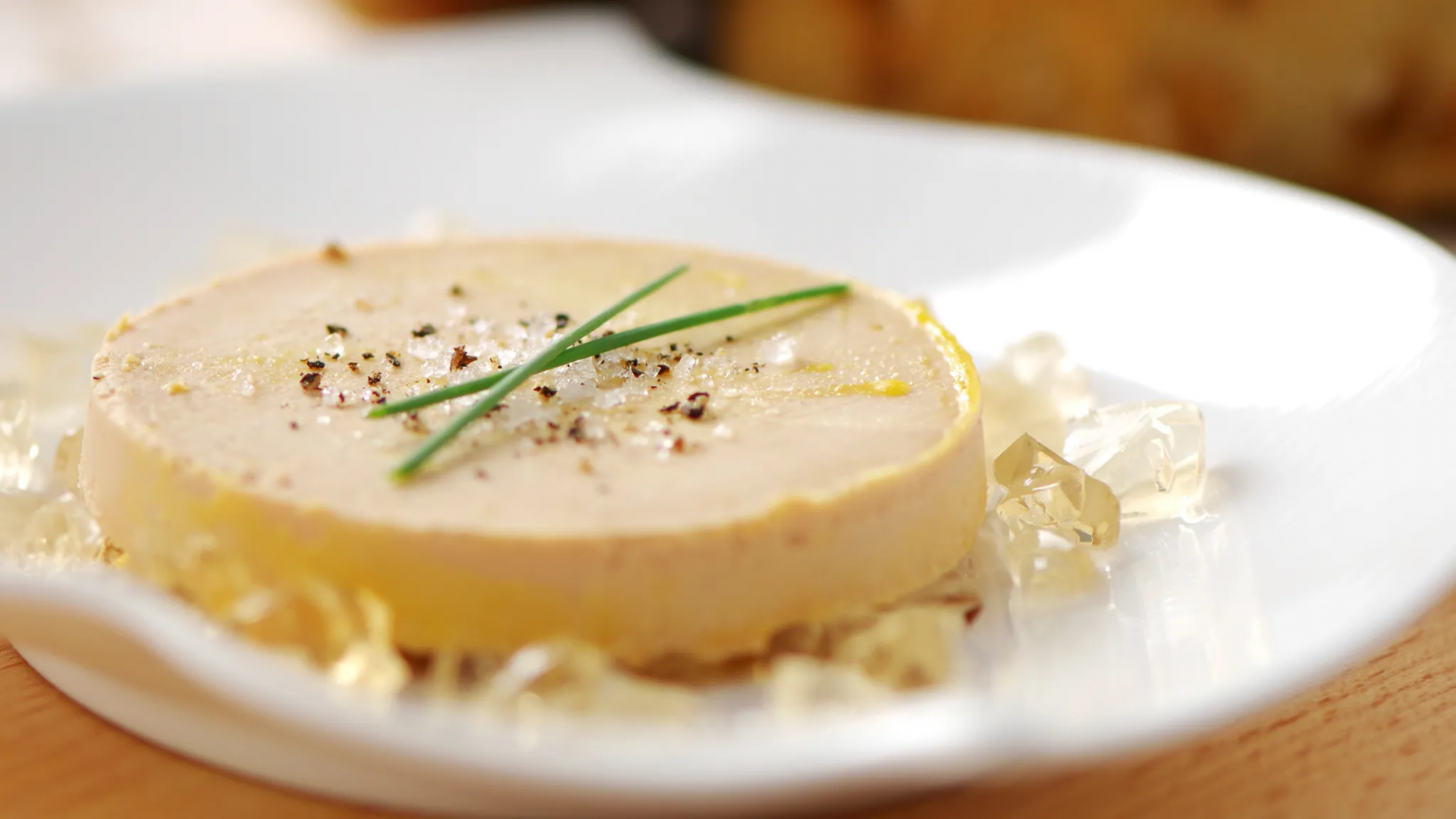 |
| Photo: Getty Images |
While both duck and goose foie gras are rich and buttery—some say beefy—in flavor, goose foie gras (foie gras d'oie) is considered the more refined, with a milder taste. Duck foie gras (foie gras de canard) can have a somewhat more gamy flavor, though it is slightly less fatty and thus better suited for high-heat cooking.
What's So Controversial About a Plump Goose Liver?
The debate over foie gras cruelty centers on the invasive practice of gavage.
In this process, farmers force ducks and geese to eat "fatty, corn-based feed through a tube inserted into their throats." Their livers grow up to 10 times the original size, hence the name "foie gras" (a French term for fatty liver) — and hence the concern from animal rights activists. That's why the Big Apple's animal activists celebrated big when the foie-gras ban passed.
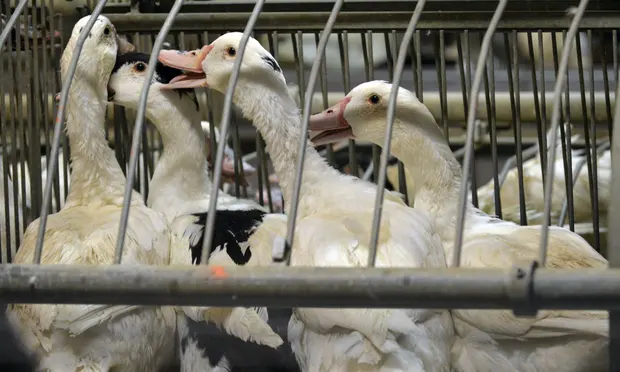 |
| Ducks at a farm in Caupenne, south-western France, where they are force-fed to produce the foie gras delicacy. Photograph: Gaizka Iroz/AFP/Getty |
"New York has sent a clear message to foie gras producers that shoving a pipe down a duck's throat and force feeding them large amounts of grain for the sole purpose of diseasing and enlarging their liver is cruel and has no place in our compassionate city," Matt Dominguez, a political adviser for NYC-based Voters for Animal Rights (VFAR), says via email. Members of VFAR surrounded Mayor Bill de Blasio when he signed the foie gras ban into law Nov. 25, 2019.
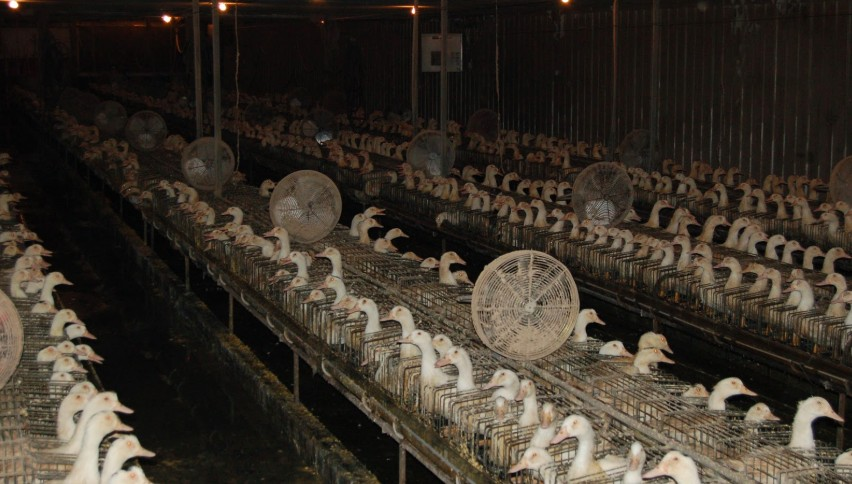 |
| Photo: Getty |
According to the VFAR website, gavage can cause ducks to hyperventilate and bleed, and they're often shackled and have their throats cut during slaughter. That's why the group led a coalition of over 50 nonprofits who rallied for bill 1378, which prohibits "storing, maintaining, selling or offering to sell force-fed products or food containing a force-fed product," according to the bill. Once the ban takes effect in 2022, violators will pay from $500 to $2,000 for each offense.
France is the world’s largest producer, consumer and exporter of foie gras. CIFOG says French farmers produced 15,000 tonnes of foie gras last year – down on the 18,800 tonnes produced in 2019 – mostly in and around the Périgord region, in south-west France. Up to 5,000 tonnes are exported annually, with up to 200 tonnes a year coming to Britain.
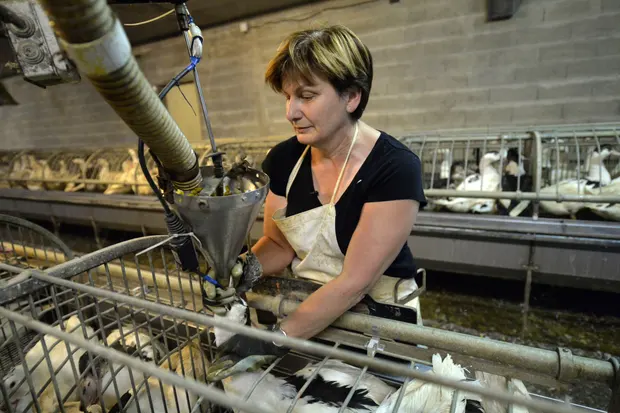 |
| Ghislaine Lalanne force-feeds ducks at her farm in Caupenne, south-western France. Foie gras producers have been badly hit by outbreaks of avian flu in recent years, forcing them to slaughter thousands of birds. Photograph: Gaizka Iroz/AFP/Getty |
Foie Gras Farmers Are Fighting Back
While Dominguez and other animal rights activists celebrated the foie-gras ban as a victory, those on the other side of the aisle are taking a stand. The Catskill Foie Gras Collective, which includes the main producers of NYC's foie gras, is challenging the city's ban. The group and farmers say it's unconstitutional, and that NYC does not have jurisdiction over the state of New York's protected agricultural businesses.
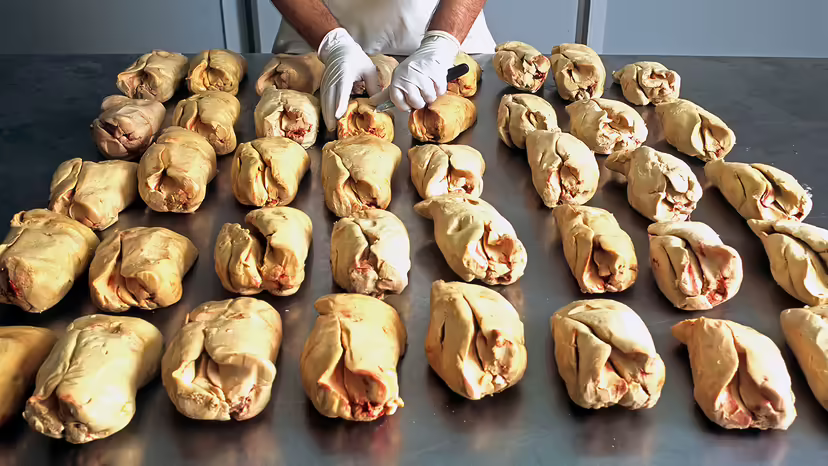 |
| Foie gras is the enlarged liver of a goose or duck that is produced by a force-feeding the birds in a process known as gavage. LUIS DAVILLA/GETTY IMAGES |
According to Catskill Foie Gras Collective President Marcus Henley, animal rights activists are the only ones who consider foie gras production inhumane.
"The idea that the small tube for feeding the ducks causes discomfort is the most misunderstood area of foie gras farming," Henley says. "Ducks are not like people. Their physiology is very different and the tube causes no discomfort."
The collective's ducks are cage free, fed via small rubber tube (versus traditional metal), and individually inspected by a government food safety officer, Henley says. Collective members stand by their approach to foie gras production, and aren't the only ones voicing their disapproval of the ban.
David Chang, esteemed chef and founder of NYC's wildly popular Momofuku restaurant, sides with the collective. "This is idiocracy," he wrote in a tweet (along with a few choice F bombs). "Stupid, short sighted, and a misunderstanding of the situation."
While the war wages on over foie gras ethics, longtime food critic Adam Platt wrote in a Grub Street article he thinks the once-trendy foie gras was already on its way out.
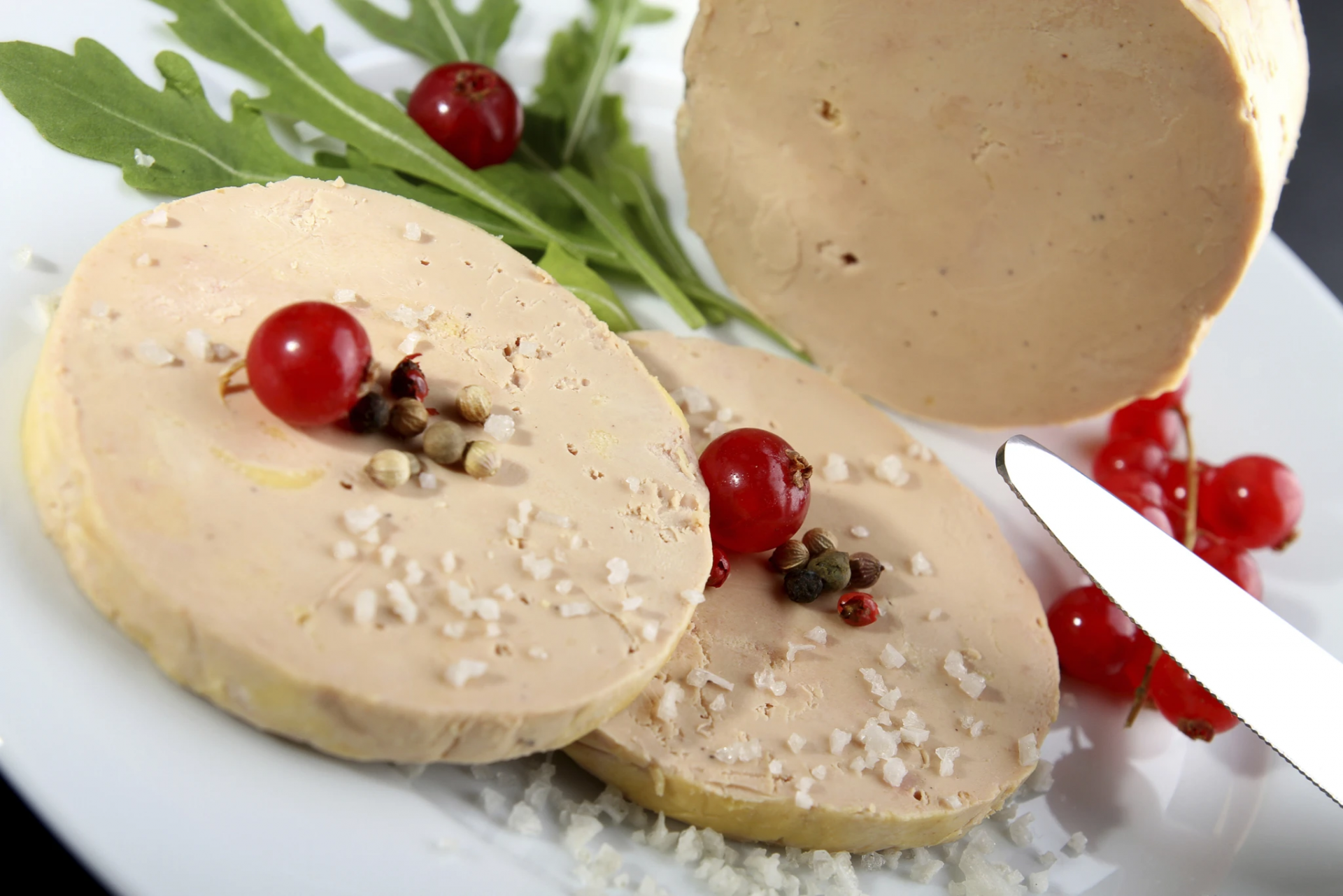 |
| Photo: Getty |
"When you start to consider all of the forbidden delicacies over the centuries that have gone in and out of fashion — terrapin soup, peacock tongues, the fabled ortolan — even the most avowed Francophile carnivore would probably admit that after a long and impressive run, the age of foie gras may be soon coming to an end," he wrote.
The head of France’s foie gras producers’ association said she was "shocked and outraged” that the British government considered banning imports of the product.
Marie-Pierre Pé, director of the Comité Interprofessionnel des Palmipèdes à Foie Gras (CIFOG), which represents about 3,500 foie gras producers, said: “I am shocked and I deplore the fact that the freedom to sell a perfectly healthy product defined under international conventions is threatened.
“For a country that promotes freedom of trade, it is not only paradoxical but shows a lack of understanding of our production as well as the problem of judgments based on anthropomorphic perceptions that the animal used in the production is suffering.
“Clearly, they don’t know how we do our job. Before taking this decision I invite them to visit a foie gras producer so they can make a rational decision. We have nothing to hide and we operate with complete transparency.”
Asked about the gavage, the most controversial aspect of foie gras production, where long tubes are pushed down the birds throat to pump food into the digestive system, causing the liver to swell to several times its natural size, Pé said campaigners were anthropomorphising – attributing human characteristics to animals – by claiming this harmed or hurt the ducks and geese.
“People have to stop imaging a tube being inserted in their own throat, because a duck and goose’s throat is nothing like yours. For a start, the duck’s throat is elastic and at the base there is a pocket that allows them to stock food – called gésiers, which is like our stomach,” she said.
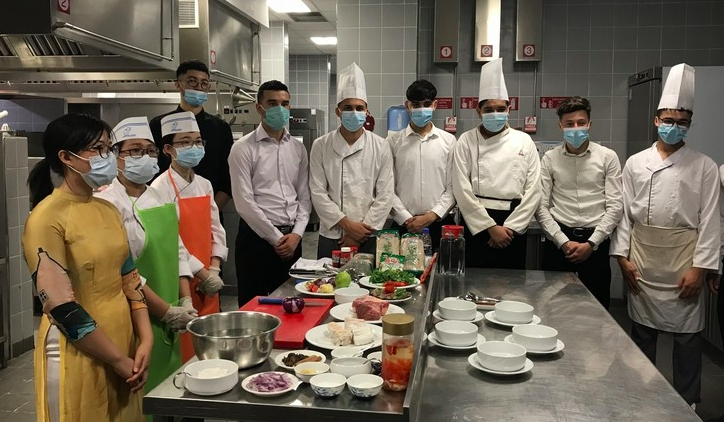 | Vietnamese Dishes Made by Algerian Hands Vietnamese and Algerian citizens shared recipes, compliments, and a few laughs at the multicultural event. |
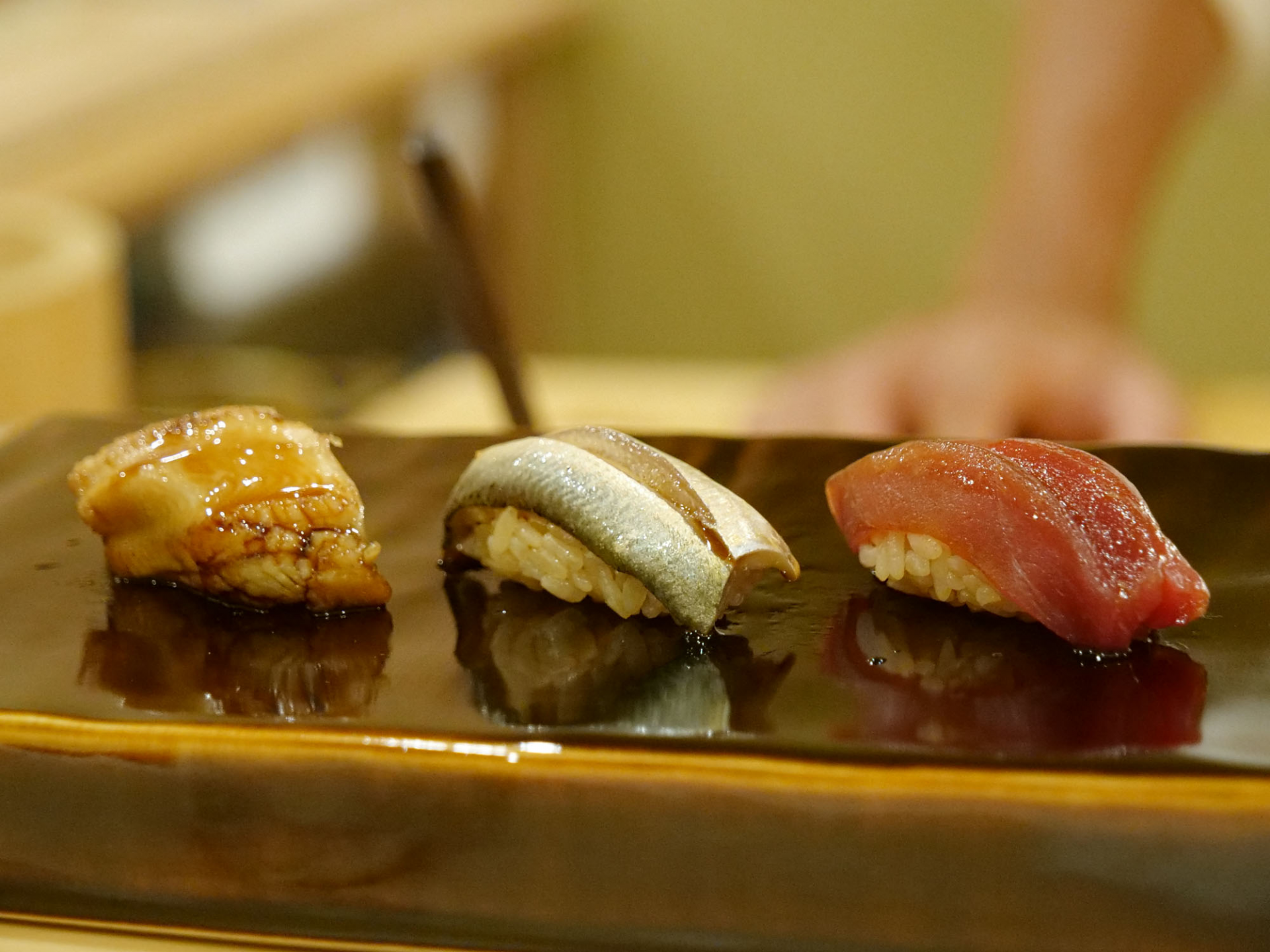 | Japan Cuisine: Top Dishes That You Should Try In Tokyo Japan is the land of unique cuisine and extraordrinary dishes for tourists who set foot on Tokyo to choose from. From Edo-style Sushi to Tempura, ... |
 | Ho Chi Minh City to host French Cuisine Festival French Cuisine Festival, themed “Balade En France” (Ride in France) will take place from 6 p.m. till 11 p.m. on at Equatorial Hotel, 242 ... |
Recommended
 World
World
Pakistan NCRC report explores emerging child rights issues
 World
World
"India has right to defend herself against terror," says German Foreign Minister, endorses Op Sindoor
 World
World
‘We stand with India’: Japan, UAE back New Delhi over its global outreach against terror
 World
World
'Action Was Entirely Justifiable': Former US NSA John Bolton Backs India's Right After Pahalgam Attack
 World
World
US, China Conclude Trade Talks with Positive Outcome
 World
World
Nifty, Sensex jumped more than 2% in opening as India-Pakistan tensions ease
 World
World
Easing of US-China Tariffs: Markets React Positively, Experts Remain Cautious
 World
World

